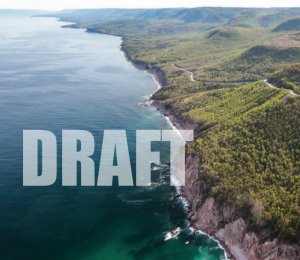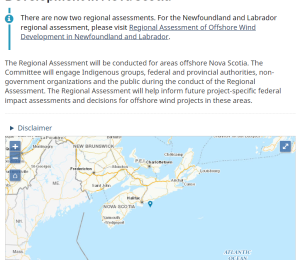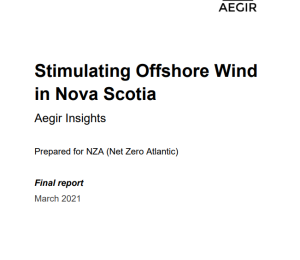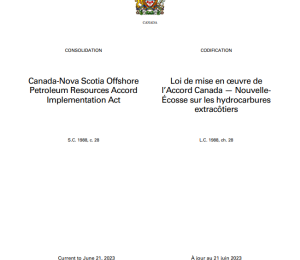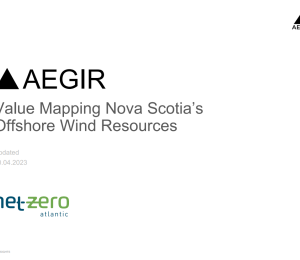Below you will find relevant resources to better inform you on the Net Zero Atlantic Offshore Wind Program.
Nova Scotia Offshore Wind Roadmap Module 1 - Nova Scotia Department of Natural Resources and Renewables
The Nova Scotia Offshore Wind Roadmap outlines activities that will support identification of Wind Energy Areas, along with an eventual approach to site selection, issuing of seabed licences, support mechanisms, and processes for interested parties to provide input on an ongoing basis. The roadmap will be an evergreen document, with updates following a modular approach in three stages. This methodology has been adopted to take into consideration ongoing workstreams federally and provincially to support the development of offshore wind projects, including the recently launched regional assessment.
Regional Assessment of Offshore Wind Development in Nova Scotia - Impact Assessment Agency of Canada
The Regional Assessment will be conducted for areas offshore Nova Scotia. The Committee will engage Indigenous groups, federal and provincial authorities, non-government organizations and the public during the conduct of the Regional Assessment. The Regional Assessment will help inform future project-specific federal impact assessments and decisions for offshore wind projects in these areas.
Stimulating Offshore Wind Development in Nova Scotia - AEGIR
To attract offshore wind investment to Nova Scotia, it is important to understand the development in other jurisdictions. If Nova Scotia developed offshore wind in its coastal waters, it would compete for investment against these jurisdictions. Naturally, investors often select locations with minimized investment risks. It is important to understand what economic and policy conditions could minimize investor risk and be used to attract investment in Nova Scotian offshore wind developments.
This report (1) summarizes the policy and economic conditions in competing jurisdictions that have experienced offshore wind investments, (2) describes the economic and policy conditions required to attract offshore wind investment to Nova Scotia and (3) identifies a feasible timeline for offshore wind investment in Nova Scotia.
Bill C-49: An Act to amend the Canada-Newfoundland and Labrador Atlantic Accord Implementation Act and the Canada-Nova Scotia Offshore Petroleum Resources Accord Implementation Act - Canada's System of Justice
Under the Accord Acts, the federal and provincial governments have worked together under a joint management regime, sharing regulatory oversight of offshore energy resource development through joint Boards, the Canada-Newfoundland and Labrador Offshore Petroleum Board (C-NLOPB) and the Canada-Nova Scotia Offshore Petroleum Board (CNSOPB). In order to realize Canada’s offshore renewable energy potential, a consistent and predictable regulatory regime in federal–provincial jointly managed offshore areas is needed. To that end, in April 2022, the governments of Canada, Newfoundland and Labrador and Nova Scotia committed to expand the mandates of the Offshore Boards in Newfoundland and Labrador and in Nova Scotia to include the regulation of offshore renewable energy development, such as offshore wind. To reflect the Boards’ new mandates, Canada and the two provincial governments also committed to renaming the Boards.
Value Mapping Nova Scotia’s Offshore Wind Resources - AEGIR
Offshore wind is an untapped resource in Nova Scotia, which, if developed, has the potential to enable energy exports, stimulate rural economies, and contribute towards meeting the province’s greenhouse gas emission reduction targets.
Studies have found that Nova Scotia has a promising offshore wind resource base. Research concludes that some offshore regions host a best-in-class wind resource with shallow water depths and appropriate substrates for fixed-bottom turbines. High average wind speeds translate into high capacity factors, which in turn can lead to comparatively low average cost of electricity.
This report analyzes and maps the levelized cost of electricity (LCOE) of offshore wind turbines in multiple locations in the Nova Scotian offshore and provides an overview of this in slide form. The report takes multiple data layers (e.g., wind speed, bathymetry, distances to port etc.) into account. The outcome can be used as a tool for intuitive screening of market and site attractiveness.

